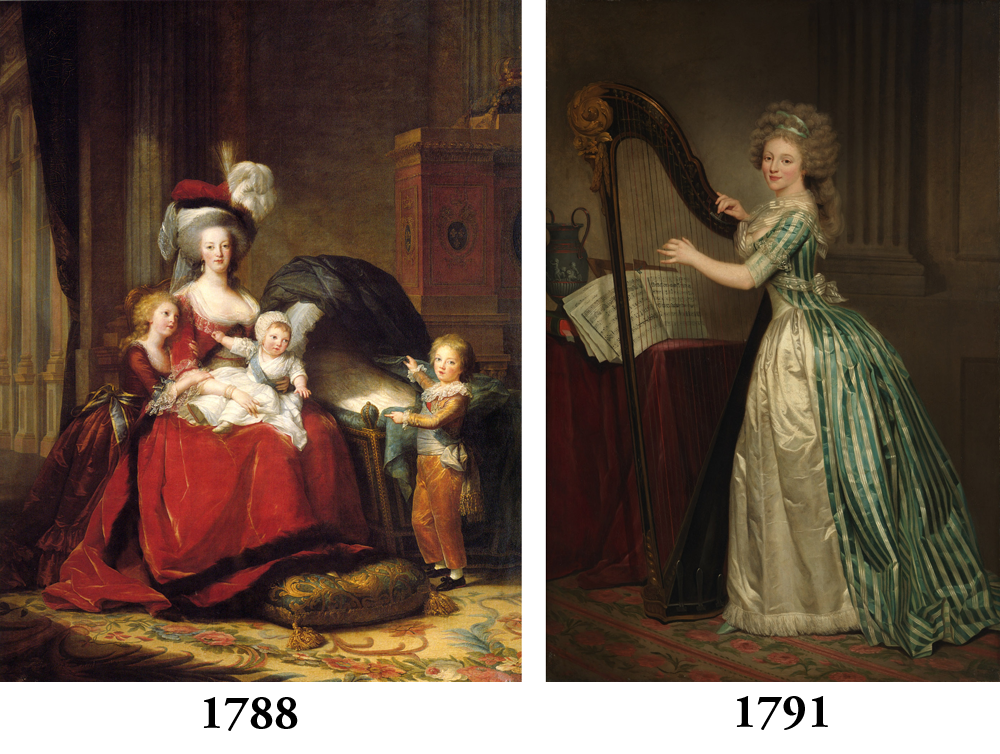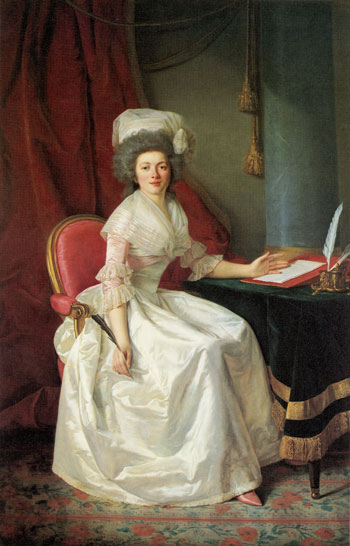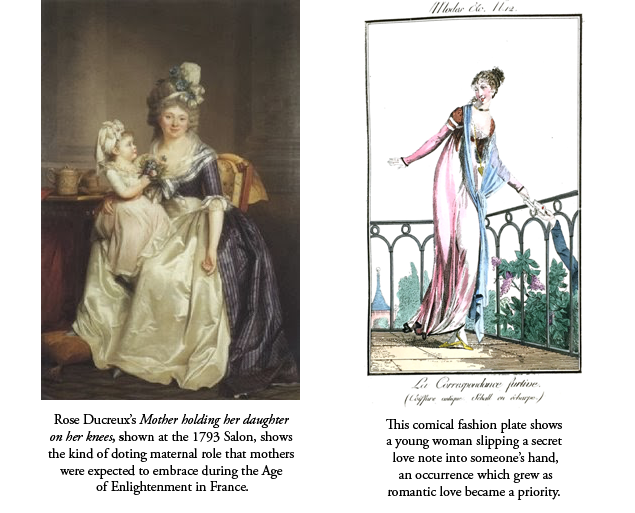
The rules and expectations that dictated women’s behavior evolved quickly over the course of the eighteenth century. At the beginning of the century, women from well-off families were taught reading, writing, and arithmetic in addition to domestic skills and catechism, typically in convents. Women were not encouraged to study music or art, because it was believed that their morale was too sensitive and emotive to create art, and it would cause them to experience too much passion. Convent education was often brutal, and teachers had little training, leaving students poorly educated. The state of convent education led to great debate over the proper way to educate children, which dominated much of the century. Private home education, where the mother or a qualified governess taught a child, became a popular alternative. Such was the case for Rose Ducreux, who learned music from her mother and art from her father. Schools were also established in provinces to teach women vocations, such as lacemaking and textile production.

While women’s art making had become accepted enough that when Ducreux displayed her first portrait at the Salon de la Correspondance in 1786 the curator of the exhibition remarked: ‘Raised so to speak amidst the arts, born with a taste for them, how could Miss Rose Ducreux not also be devoted to them? Her sketching successes from her tender youth must have decided her profession, and by uniting her talents of all sorts with the graces that characterize them, she has made her entrée as have the distinguished artists of her sex in England and in France that we have the happiness to possess, her work inspires hope that she will walk further and further in their footsteps.’ (Pahin de la Blancherie in Baillio 88, pg 22)

While the spirit of the Enlightenment allowed women to explore the arts and intellectual pursuits with more freedom than previously tolerated, it also brought with it the emergence of the nuclear family. The concept of romantic love in marriage became increasingly popular, and women adopted the role of affectionate mother and wife as marriages became warmer. For the first time, women began to write about their affection for their children, and took steps to raise them in a “natural” way. Because motherhood was seen as such an important job for a woman, depicting oneself as a dutiful mother was an effective way to show one’s feminine values.
Marie Antoinette’s extravagance and luxurious taste in clothing and jewelry were well known throughout France. In the immediate aftermath of the Diamond Necklace Affair, where Marie Antoinette’s reputation was permanently tarnished, she commissioned Elisabeth Vigée-Lebrun to paint the full-length portrait of her and her children. The portrait shows the queen with her three children at Versailles, with the jewelry case she was given by Louis XV upon her arrival in France displayed prominently in the background. The portrait was intended to both depict her as both gracious queen and attentive mother. Contemporary viewers, however, were preoccupied by what was viewed as a lack of “intention in her gaze” which was alternately read as a disinterest in parenting by the queen, or painterly inability. The portrait ultimately did not help Marie Antoinette reclaim popular opinion, but it’s reception helps to show how important the appearance of femininity through motherhood was at this time, even after the emergence of new roles for women.